You would think that after baking bread for the past 22 weeks, I would have learned a thing or two about the properties of yeast. Specifically, that yeast causes bread dough to rise and expand. Somehow I forgot this lesson when making Pane Siciliano, the 23rd bread in the Bread Baker’s Apprentice Challenge.
Pane Siciliano is an Italian bread made with both bread flour and semolina flour. Semolina flour is milled from Durham wheat and is traditionally used to make pasta. Peter Reinhart promises “a finished loaf with a beautiful blistered crust… and a crumb with large irregular holes.” Ok, looks like we’re obsessing about bread holes again.
The bread begins with starter, made from flour, water, yeast and salt, prepared and refrigerated the day before. The starter is then mixed with bread flour, semolina flour, water, yeast, olive oil, salt and honey to form a soft and pliable dough. Then the dough is set aside to ferment for about 2 hours, until it doubles in size.
It still amazes me that when you first start mixing you have a shaggy mass. And after a mere 10 minutes of kneading the dough is transformed into a smooth supple ball.
Then the dough is divided into 3 pieces and each is shaped into a baguette, and then extended until they are all about 24 inches long. I appreciated the baguette shaping practice and my skill level is almost at the mediocre level. Still a long way to go before I am good at this, but so much better than my first pathetic shaping experience.
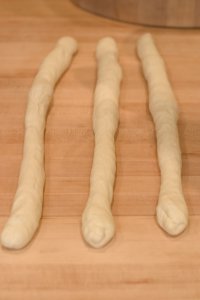
The loaves are placed on a parchment lined baking sheet that has been sprinkled with semolina flour. And here is where it all started to go wrong. I placed all 3 loaves on the same baking sheet.
Clearly the past 22 weeks of bread baking had taught me nothing! I misted the loaves with water, sprinkled sesame seeds on them, sprayed them again with vegetable spray oil, covered them with plastic wrap and put them to bed in the fridge for an overnight rest.
I’m not sure why I was so surprised with the scene that greeted me the next morning when I opened the fridge. The 3 loaves had swelled and had grown together into one large snail monster. It looked like a genetic experiment gone horribly wrong. Clearly, each loaf should have gone on it’s own baking sheet.
I tried to pry the loaves apart as gently as possible but unfortunately, in trying to separate the siblings, I squished them and they lost any gas they had. After separation,they looked a little worse for the wear.
The test to see if the loaves are ready for baking is to poke the dough gently. If the dough springs back quickly, they need more proofing time. If the dough stays dimpled, they’re ready for baking. After a gentle poke, it was clear there was no spring left in my loaves. Into a hot oven they went for about 30 minutes. They seemed to come back to life a bit during the baking process.
I let them cool for about an hour and sliced into them. I had one nice large hole but the rest of the dough had a very tight crumb.
The taste was slightly sweet and nutty and the texture quite tender. I was hoping for a crisper crust and chewier inside. We managed to eat about half of one of the loaves for dinner that night but unlike some of the other breads on this challenge, this one did not continue calling me into the kitchen all night for “just one more slice.”
Next week we tackle the Italian classic Christmas bread, Panettone.

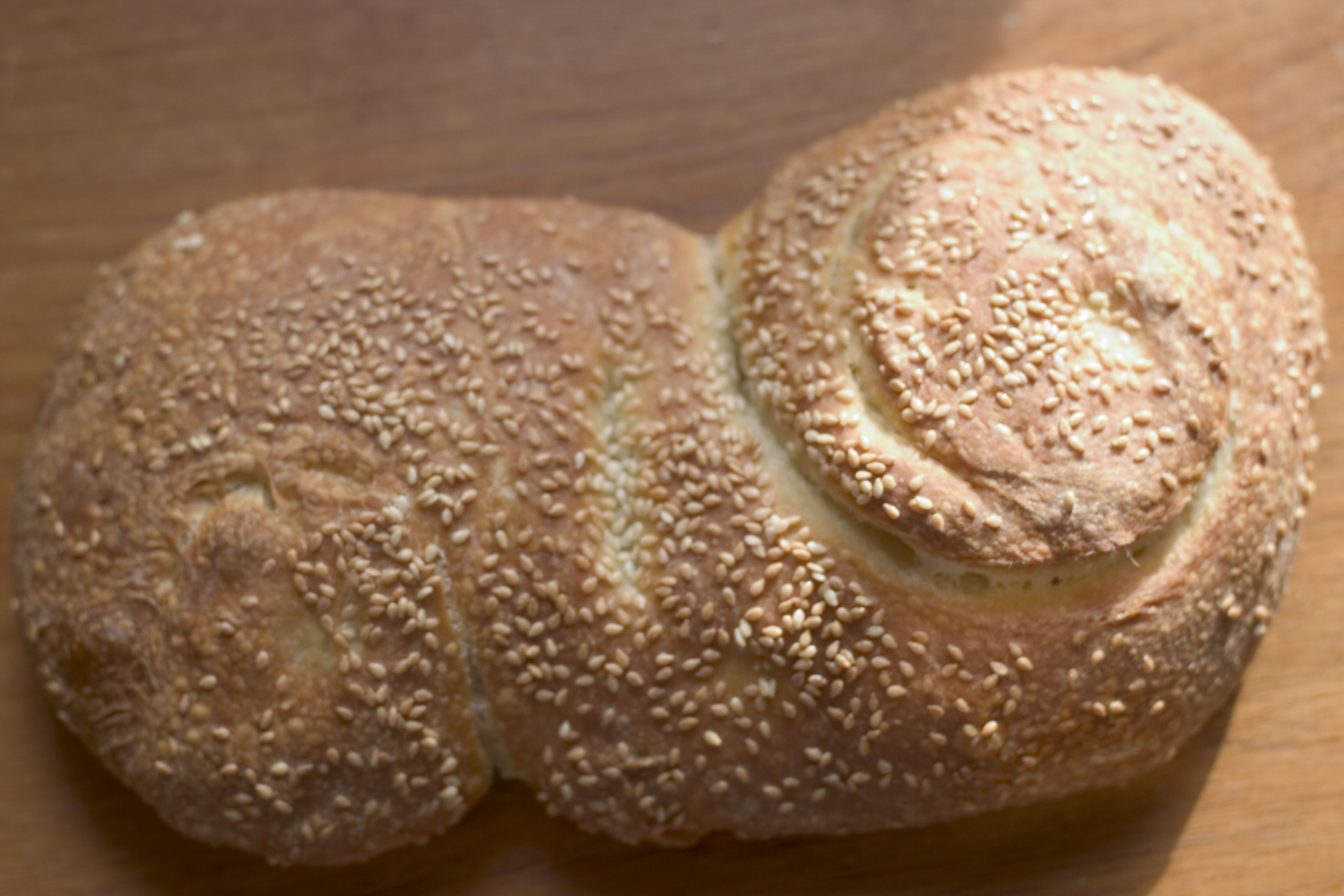
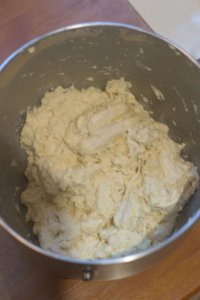
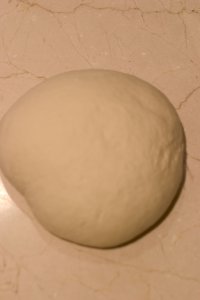
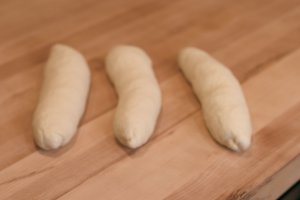
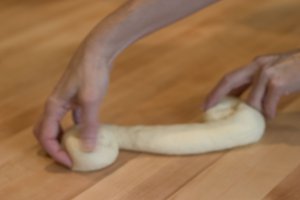
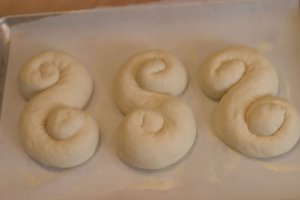
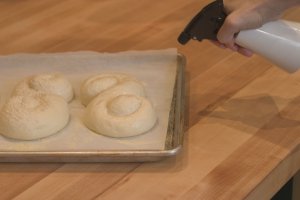
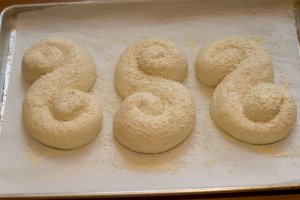
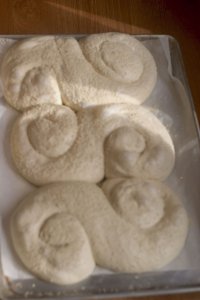
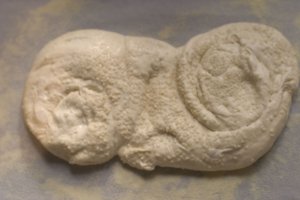
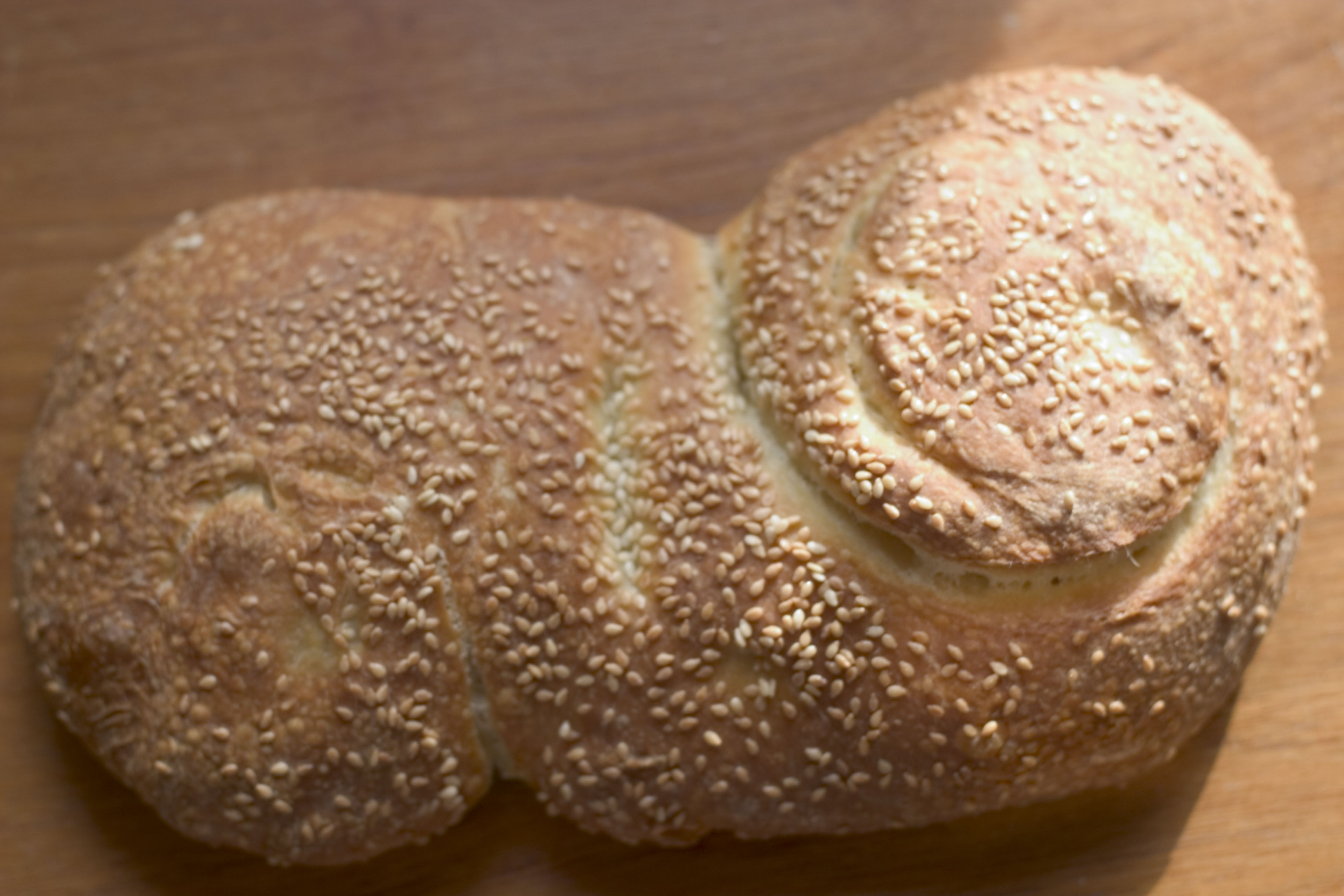
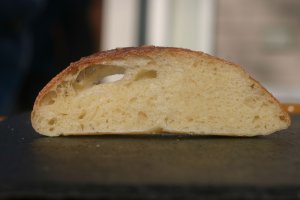
Pane Siciliano looks like so much fun to bake! I can’t wait to make it. The crumb is wonderful!
Wow, they were perfect going into the fridge, weren’t they. I almost did the same thing but at the last minute put two on one sheet and put the third one on a sheet by itself. We really enjoyed this bread.
Isn’t that funny, I loved this one. Fun to play with.
They probably overproofed in the fridge.
This is one of my favorite breads, though.
Oh, they looked awesome going into the fridge! Mine got too close for comfort, but not stuck. I only did a six hour overnight rise, though. I ended up cutting them apart on the parchment paper and sliding instead of trying to move them by hand. Still, the finished product looked great!